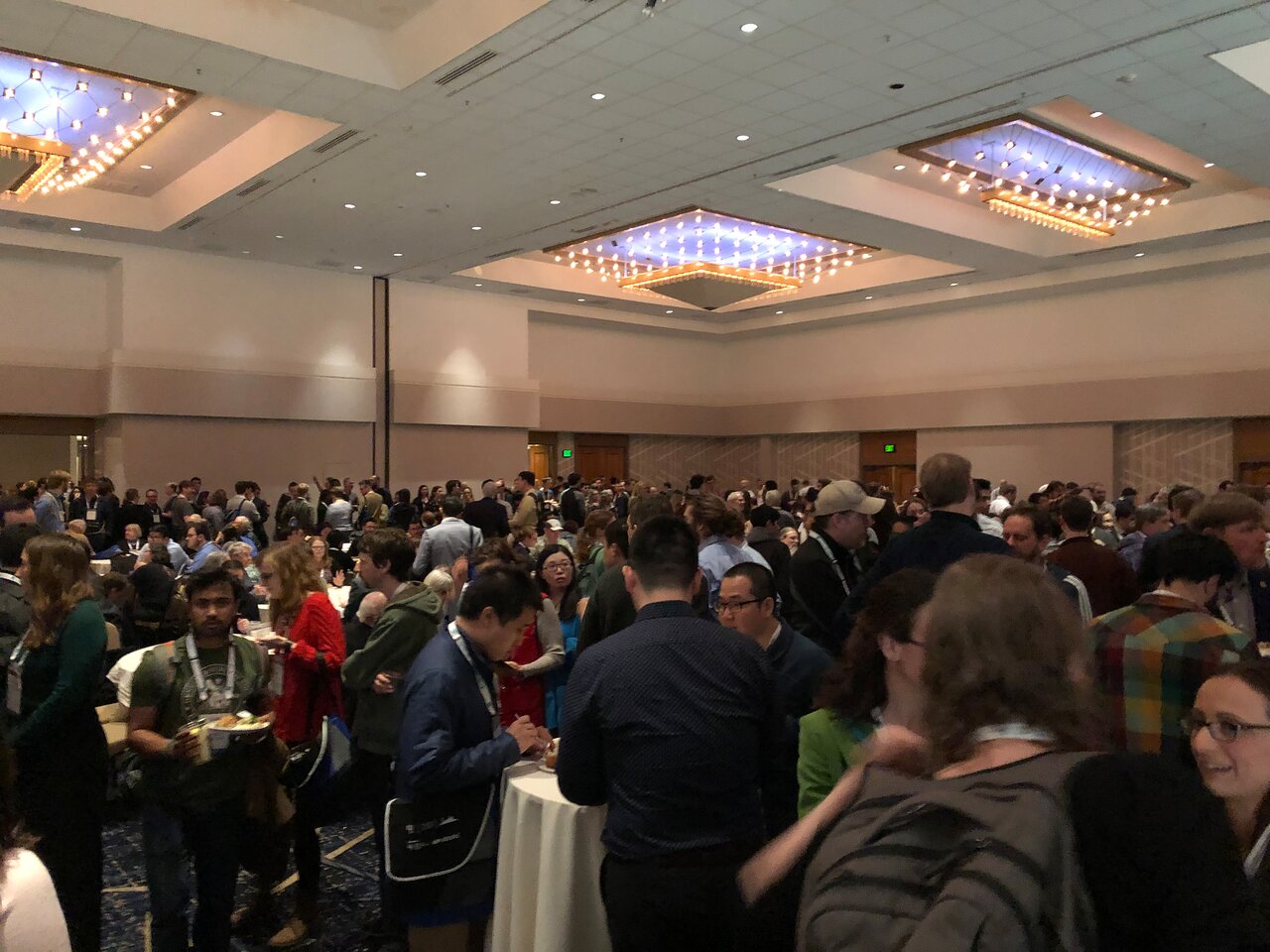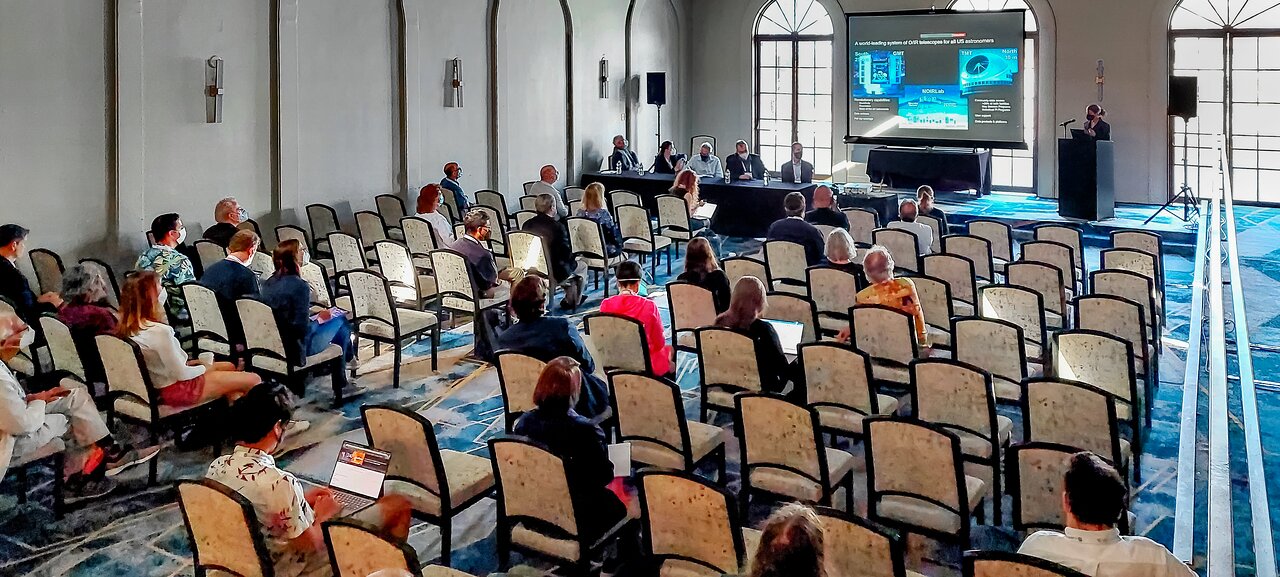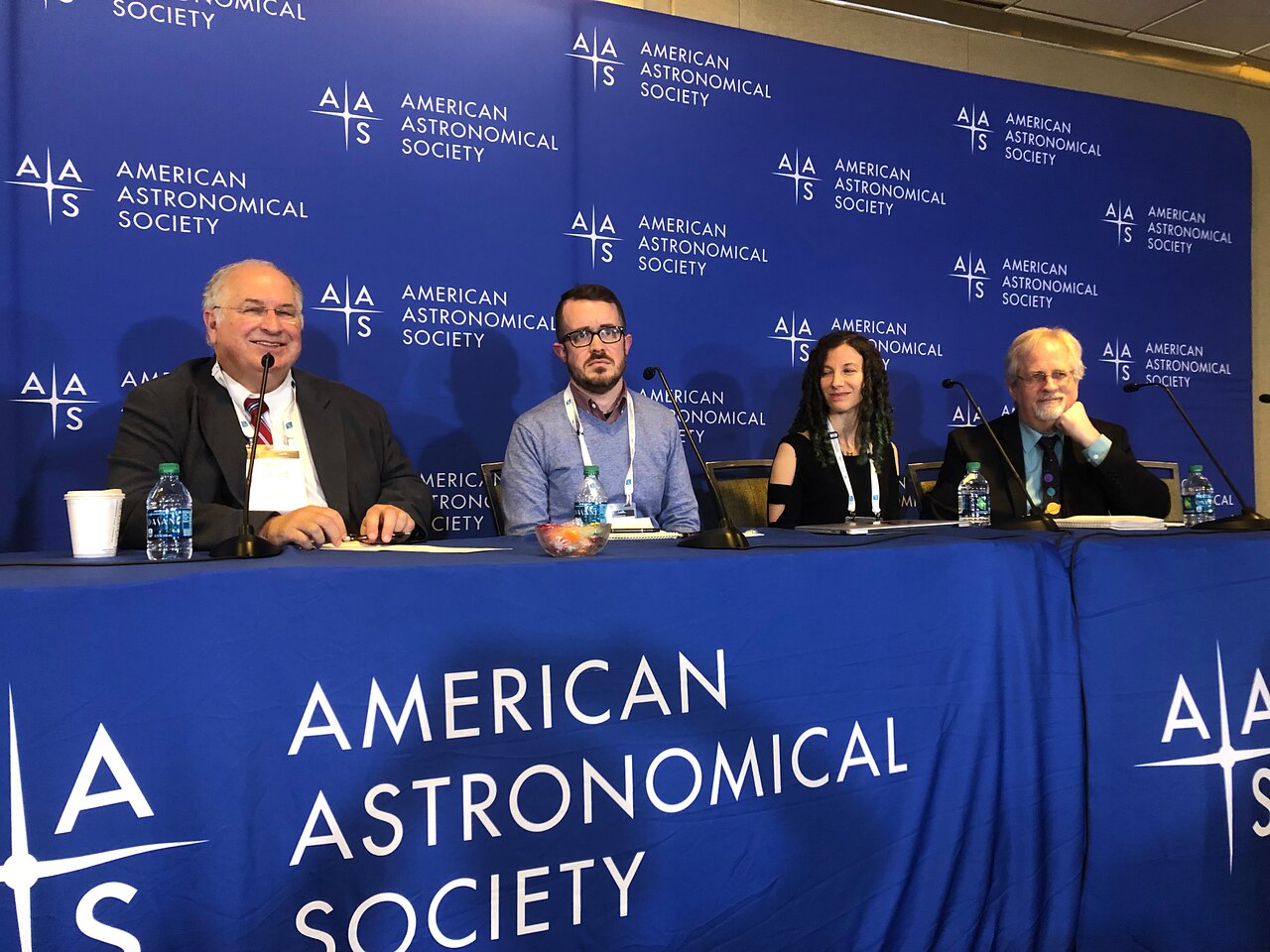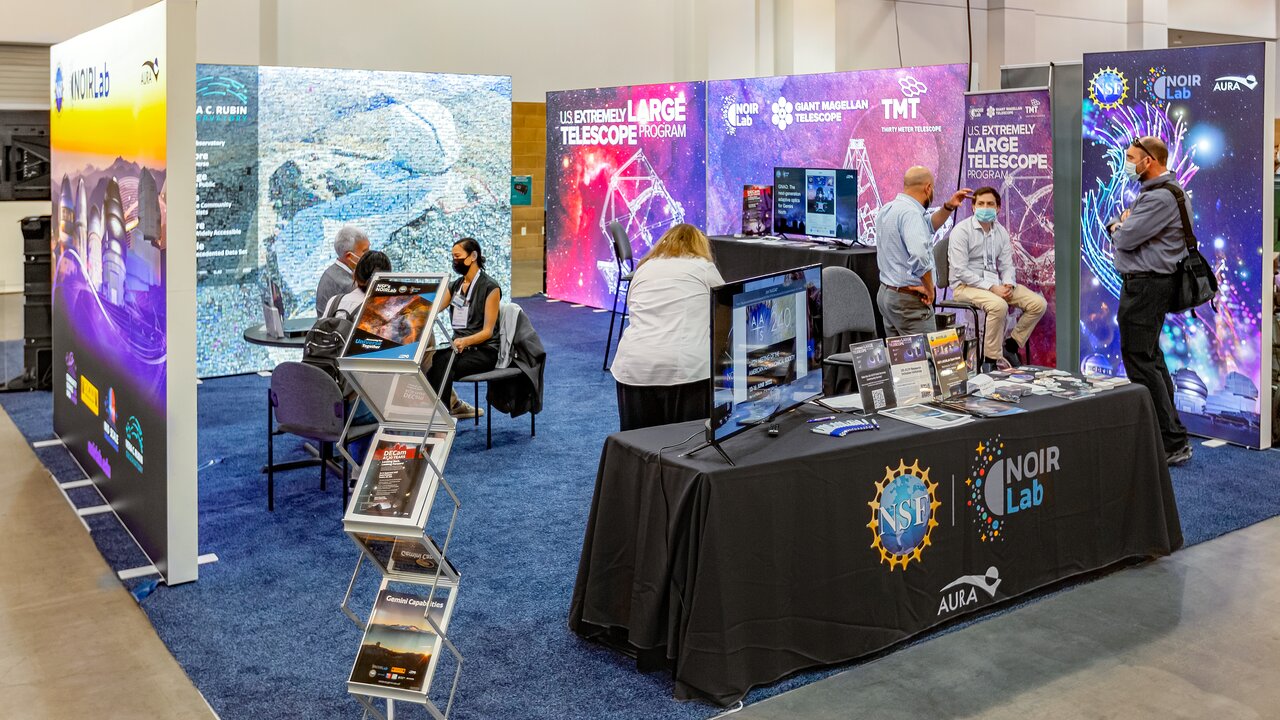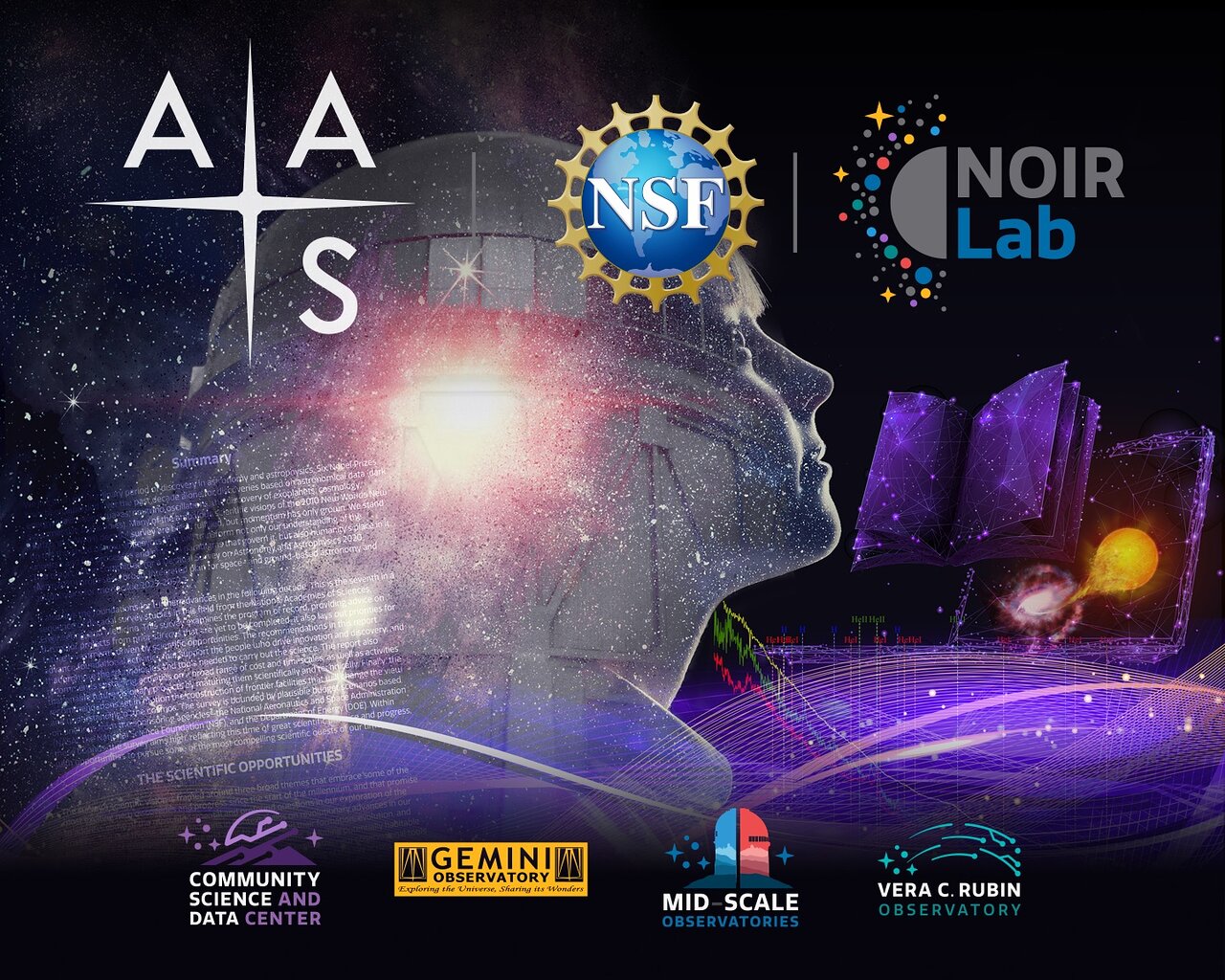
Science Shines Bright at the ‘World Cup’ of Astronomy and Astrophysics
NOIRLab Joins the Global Astronomy Community at 2023 AAS Winter Meeting
6 Jan. 2023
In December 2022 sports fans were transfixed on what was arguably the biggest international professional sporting event of the past several years, the FIFA World Cup. This gathering of some of the world’s premier athletes was riveting entertainment, as people cheered on their favorite teams, savored victories, and bemoaned stinging losses.
Sporting events, however, do not have a monopoly on garnering global attention.
Astronomy and the wonders of the Universe also have the startlingly powerful ability to capture the imagination of people from around the world, especially during astronomy’s own World-Cup-level event, the annual winter meeting of the American Astronomical Society (AAS). This premier gathering of the astronomy community, held this year in Seattle, normally draws more than 3000 astronomers, astrophysicists, engineers, and science professionals from academia, government agencies, and beyond. It also attracts a cadre of international reporters and media representatives who eagerly await the unveiling of the latest discoveries about the cosmos.
Presenting research and sharing discoveries
The AAS meeting, like other gatherings of scientific societies, is principally focused on researchers presenting their latest findings and sharing insights among their peers. This is an essential part of the scientific process. Unlike peer-reviewed journals, which present fully fledged scientific findings, scientific meetings also include preliminary results and future directions for prospective research. This allows other scientists to discuss new results and to ask vital questions that can help uncover lingering questions and propose other avenues of research for future investigation.
"You never know what chance encounter may spark a years or decades-long research collaboration"
"You never know what chance encounter may spark a years- or decades-long research collaboration," said Aaron Meisner, an astronomer at NSF’s NOIRLab in Tucson, Arizona. The lingering impact of the pandemic has meant that for several years, astronomers have not had the opportunity to interact face-to-face and benefit from these interactions. "It’s important to hear diverse perspectives, which often inspire creative new research directions not previously imagined," said Meiser. “I look forward to meeting pandemic-era research collaborators in-person for the first time!”
NOIRLab Science Fellow Thomas Seccull shares a similar sentiment: “In my experience the biggest benefit that comes from attending conferences like the AAS is the opportunity to connect, or reconnect, collaborate, and talk science with other researchers in my field. Discussions I've had with friends and colleagues at conferences have been crucial in helping me develop new research ideas, generate community interest in my work, and most important of all develop connections that help me progress my career.”
"Discussions I've had with friends and colleagues at conferences have been crucial in helping me develop new research ideas, generate community interest in my work, and most important of all develop connections that help me progress my career."
There is a full listing of NOIRLab presentations and events here.
Breaking news and covering scientific research
One of the most vibrant parts of the AAS meeting is actually one that is tangential to the scientific sessions.
Off in a secluded corner of the Seattle Convention Center, there are several rooms reserved for registered media and press representatives. The main room, the press room, is often a buzzing center of activity where reporters and public information officers (PIOs) gather to interact, write stories, and search through abstracts and session titles to find hidden gems, research findings and new information that has yet to be reported. This is in many ways the command center of the meeting’s media outreach program, organized and staffed by the AAS staff and volunteers.
Much of the work to ferret out the compelling science news, however, is actually done in the weeks and months leading up to the meeting. AAS staff ask PIOs at universities, observatories, and other institutions to scour the list of presentations for research related to their institutions. This could be presentations by staff scientists, reports on cross-institutional, public-outreach collaborations, or poster sessions from graduate and undergraduate students. This year — with 298 sessions, including 141 oral sessions and 104 iPoster sessions — perusing the entire list of abstracts has been a monumental task.
The fruits of this labor, however, are borne out when topics are selected by the AAS to feature in one of several news briefings each day of the meeting. These events, which are also webcast to journalists around the globe, showcase some of the most compelling areas of research. For this reason, nearly 100 members of the media have registered to attend this event.
The press conference presentations are often accompanied by news releases that are disseminated on the various science newswires, such as Eurekalert! and Newswise. Though news releases based on scientific meetings are considered an acceptable threshold for publicity, it is understood that the results may be preliminary and may not have undergone peer review. For that reason, NOIRLab (and various other institutions) have a standing policy to only issue news releases if there is an accompanying accepted paper.
This stricture is an important aspect of ensuring accurate science reporting.
What is difficult to showcase in these news reports is that these presentations are just one step in the process of scientific discovery. There are many fits and starts along the way and oftentimes early results turn out to be wrong after deeper observation and additional research.
It is not only the scientific breakthroughs that are important for the community to share, but also up for discussion are the broader topics that impact the whole field. These include the effects of satellite constellations and light pollution on current and future observations, and how the astronomy community should adapt the way it does business in order to combat climate change.
The business end of astronomy
Beyond the scientific sessions and one-on-one interactions, the AAS has another critical function and that is to allow observatories, government agencies, and other research institutions to reach out to and hear from the astronomy community.
These interactions can happen organically in the meeting Exhibit Hall, which this year will include 71 exhibitors, including 14 new exhibitors. Here, NOIRLab staff will be available to talk about our capabilities and the tools we bring to the community. There also are more organized settings, such as the NOIRLab and US Extremely Large Telescope Program (US-ELTP) Joint Open House. At this social event, join staff from NOIRLab, the Giant Magellan Telescope, and the Thirty Meter Telescope to hear the latest news about our joint endeavor to provide all US astronomers with access to a unique, bi-hemispheric system of next-generation giant telescopes.
There also will be sessions that address the ongoing challenges of light pollution. The Light Pollution, Radio Interference and Space Debris Committee will have an informative session on Tuesday 10 January at 10 a.m. in Seattle Convention Center room 205 and an open house on Wednesday 11 January at 10 a.m. in rooms 201/202. “We live in a watershed moment in terms of access to space and the protection of the night sky,” said Connie Walker, a scientist at NOIRLab and Co-Director of the IAU Center for the Protection of Dark and Quiet Sky from Satellite Constellation Interference. “The long-term impacts of night sky degradation could be an existential threat to astronomy, if mitigations are not taken. The AAS meeting is an opportunity network with attendees to redress these issues.”
"The AAS meeting is an opportunity to network with attendees to redress these issues."
Other formal sessions include the NOIRLab Town Hall on Wednesday 11 January at 12:45 p.m. and the Vera C. Rubin Observatory Town Hall on Tuesday 10 January at 6:30 p.m.
There will also be sessions on time-domain astronomy at NOIRLab (Monday 9 January, 9 a.m. – 10:30 a.m.), DRAGONS for data reduction at the Gemini Observatory (Monday 9 January, 9:30 a.m. – 11:30 a.m.), and the US NGO Splinter Session: The Role of Gemini Observations in the JWST Era (Wednesday 11 January, 9:00 a.m. – 10:30 am).
There is a full listing of everything going on related to NOIRLab here, and more things are being added daily.


